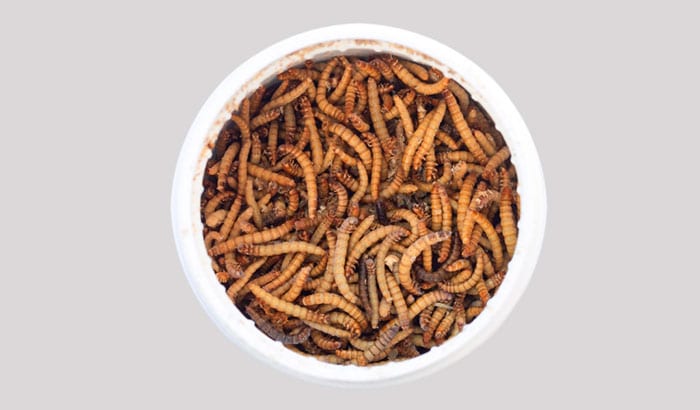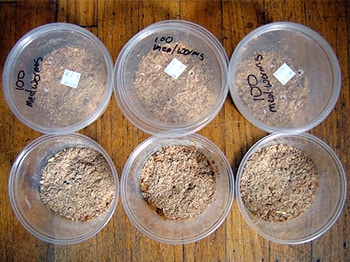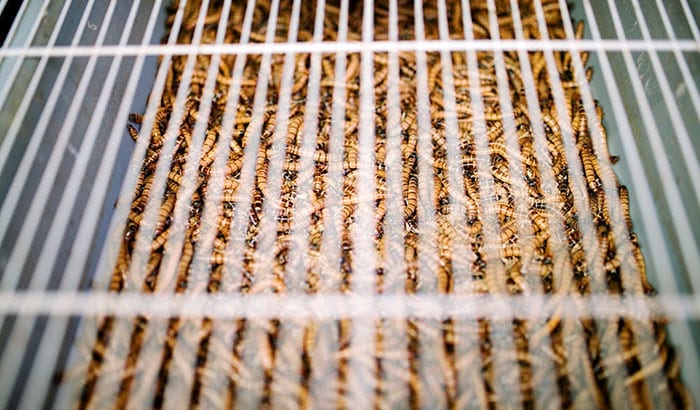Mealworms are the more protein-rich option of bird food you can include in the feeder menu. But because mealworms are a little less manageable than birdseed, knowing how to store mealworms is a nifty little skill to have. Depending on how fast the birds in your area consume mealworms, your options are short and long-term storage – fortunately, both are easy enough.
This post tackles how to store live mealworms, what birds eat mealworms, and more.
Contents
How to Store Live Mealworms
Live mealworms are a little harder to manage than dead mealworms because these things could crawl all over the place or mature into adult beetles. There are two ways to store live mealworms – one is for the long term, and the other is for the short term.
Storing Live Mealworms for the Short Term
Mealworms need three months to mature into fully-grown darkling beetles (yes, these things are actually beetle larvae). So if you get yours while they are young, you have about twelve weeks to get all the birds to consume them. That’s your short-term timeline- twelve weeks.
The packaging where live mealworms arrive is not suitable for storage use. So you need to get a different container for the larvae. A plastic container will suffice as a container.
Spread dried oatmeal, wheat bran, cornmeal, or chicken mash on the bottom of the container. An inch deep of grain is enough for the mealworms’ food source. But if you want to increase the nutritional value of the grain, dried and powdered bird food is a good option.
Placing a chunk of potato, carrot, apple, or banana peel on the container also increases the nutritional value of the mealworms. After ensuring that the mealworms have something to eat, throw them into the container, too.
If the container has smooth, vertical sides, and if the mealworms are more than three inches below the rim, you don’t need to cover the container. Otherwise, wrap the plastic container with a secure lid. If you have to, poke the top with holes, so the mealworms have oxygen.
Store the container in a dark and cool place. Placing it somewhere 80 degrees Fahrenheit cool slows down their development into beetles. Temperature affects the growth of mealworms; the lower the temperature is, the slower they grow.
Be sure to replace the chunk of potato, carrot, apple, or banana peel if it becomes moldy or smells bad.
Storing Live Mealworms for the Long Term
If you need the mealworms to last for more than three months, then you have to store them for the long term.
As I have already mentioned, lower temperatures slow the growth of mealworms into adulthood. Storing live mealworms for the long term requires a refrigerator or anything to keep the temperatures down without killing the mealworms. The preparation process is the same as storing mealworms for a short time except for a few things.
Those few things are skipping the chunk of apple, banana peel, carrot, or potato and putting the container in a refrigerator. Also, having a lid for your container is necessary because the odor of the worms can mix with the other things in the fridge.
You still have to mix a layer of grain in the container and be sure to label the container. Lastly, it is imperative to avoid putting the mealworms in the freezer if you want them to live. But if you’re going to feed birds dead mealworms, freezing them is a humane way of killing them.
How to Store Dead Mealworms
Dead and dried mealworms are easier to store and manage than live ones. For one, dead and dried mealworms don’t spoil, so you just put them in any ziplock and leave them be. You don’t have to feed the worms, and you don’t have to check up on them regularly.
Leaving dead and dried mealworms on the shelf is perfectly fine. As long as there is no air circulation seeping into the plastic bag or container, the mealworms are going to be okay.
What Birds Eat Mealworms?
Now that you know the effort you have to make to store and preserve mealworms, you have got to wonder what the point of it all is. As it turns out, adding mealworms to your bird feeders is very beneficial to your local birds.
Mealworms are rich in protein, vitamins, and other minerals necessary for birds, especially hatchlings. The examples of birds that eat mealworms are:
- Chickadees
- Woodpeckers
- American robin
- Bluebird
- Cardinals
- Nuthatches
- Catbirds
- Thrashers
- Towhees
- Wrens
- Warblers
Eating mealworms is very natural for many birds, so it is only suitable to feed them this nutritional food. Any insectivorous bird species can benefit from having mealworms in your feeder.
Conclusion
There you have it! The basic principles of how to store mealworms are explained. Keeping mealworms, whether they are dead or alive or whether you need to store them for the long term or short term, is easy enough. As long as you have the right container, food, and temperatures, you can store and preserve mealworms for as long as you want.



